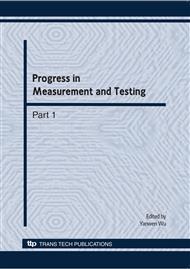p.676
p.682
p.686
p.692
p.696
p.700
p.708
p.713
p.718
Research on the Pressure Fluctuation in Draft Tube Based on the Sparse Bayesian
Abstract:
Relevance Vector Machine (RVM) is a novel kernel method based on Sparse Bayesian, which has many advantages such as its kernel functions without the restriction of Mercer’s conditions, the relevance vectors automatically determined and fewer parameters. In view of the actual situation that the corresponding space curved surface which expressed the characteristics of pressure fluctuation is too complex to be analyzed, the RVM regression model for describing the characteristics which is nonlinear relationship among pressure fluctuation value,unit rotation and unit discharge is established,and it is applied to hydropower station. Comparing with Support Vector Machine (SVM), the experimental results show the final RVM model achieved is sparser, the prediction precision is higher and the prediction values are in better agreement with the real values.
Info:
Periodical:
Pages:
696-699
Citation:
Online since:
May 2010
Authors:
Price:
Сopyright:
© 2010 Trans Tech Publications Ltd. All Rights Reserved
Share:
Citation:


